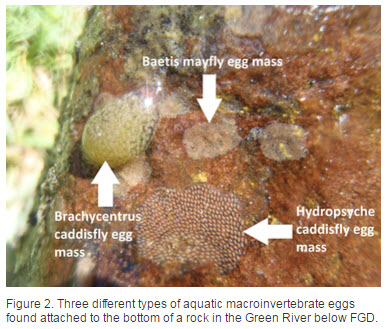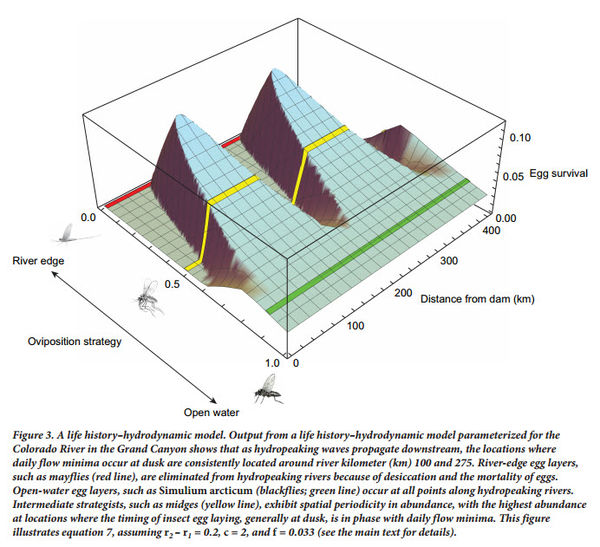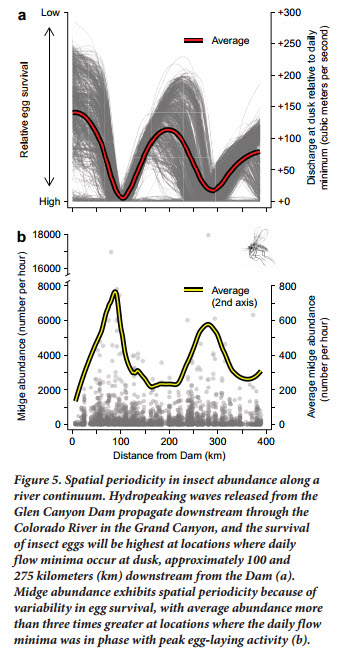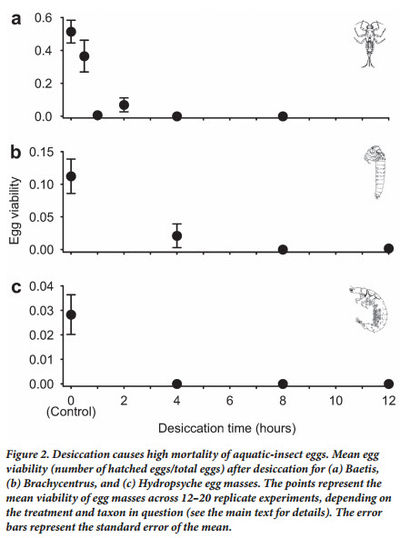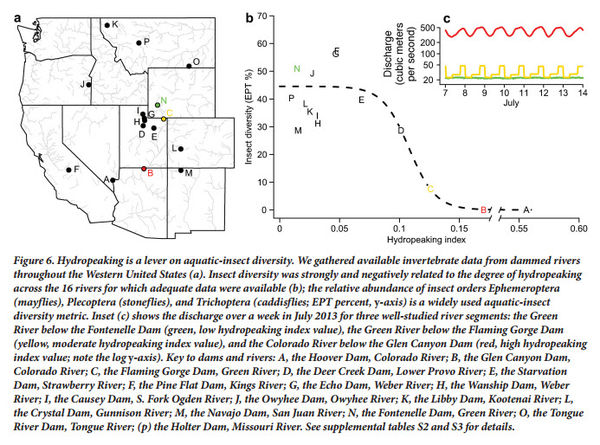- Caddis hatch below Parker Dam. There are several species of EPT below Parker and Davis Dam in spite of daily fluctuations that exceed 6 feet per day.
At least three genera of caddisflies and one genus of mayfly were collected in drift and benthic samples downstream of Davis and Parker Dams. These are species of a net-spinning caddisfly in the family Hydropsychidae (Smicridea), a case-building caddisfly in the family Leptoceridae (Nectopsyche), microcaddisflies in the family Hydroptilidae, and a swimming mayfly in the family Baetidae (Baetis). Hydroptilidae are found in light trap samples downstream of Lees Ferry in Grand Canyon, and are common in Arizona streans and rivers (Blinn and Ruiter, 2009). They are nonetheless very small (as indicated by its common name): at under 5 mm in total length (Merritt and others, 2008), generally smaller even than midge (Chironomidae) larvae, and therefore not a valuable prey item for fish. The genus Smicridea spins silk nets for capturing floating particles or organic matter suspended in the water column. For this reason, its family, in general, is common in tailwaters, where they can achieve great densities (Nakano and Strayer, 2014). In fact, Smicridea specifically is a documented pest species in the Parker Dam tailwater and in the Central Arizona Project canals carrying water to the Phoenix metropolitan area (D. Ruiter, personal communication). Baetis mayflies are one of the more common genera in aquatic ecosystems (Merritt and others, 2008); like midges, they are virtually ubiquitous in freshwater habitats. Relatively less information is currently available about the Nectopsyche caddisflies found in these sites, pending further literature research. (2016 GCMRC trip summary to WAPA)
|
